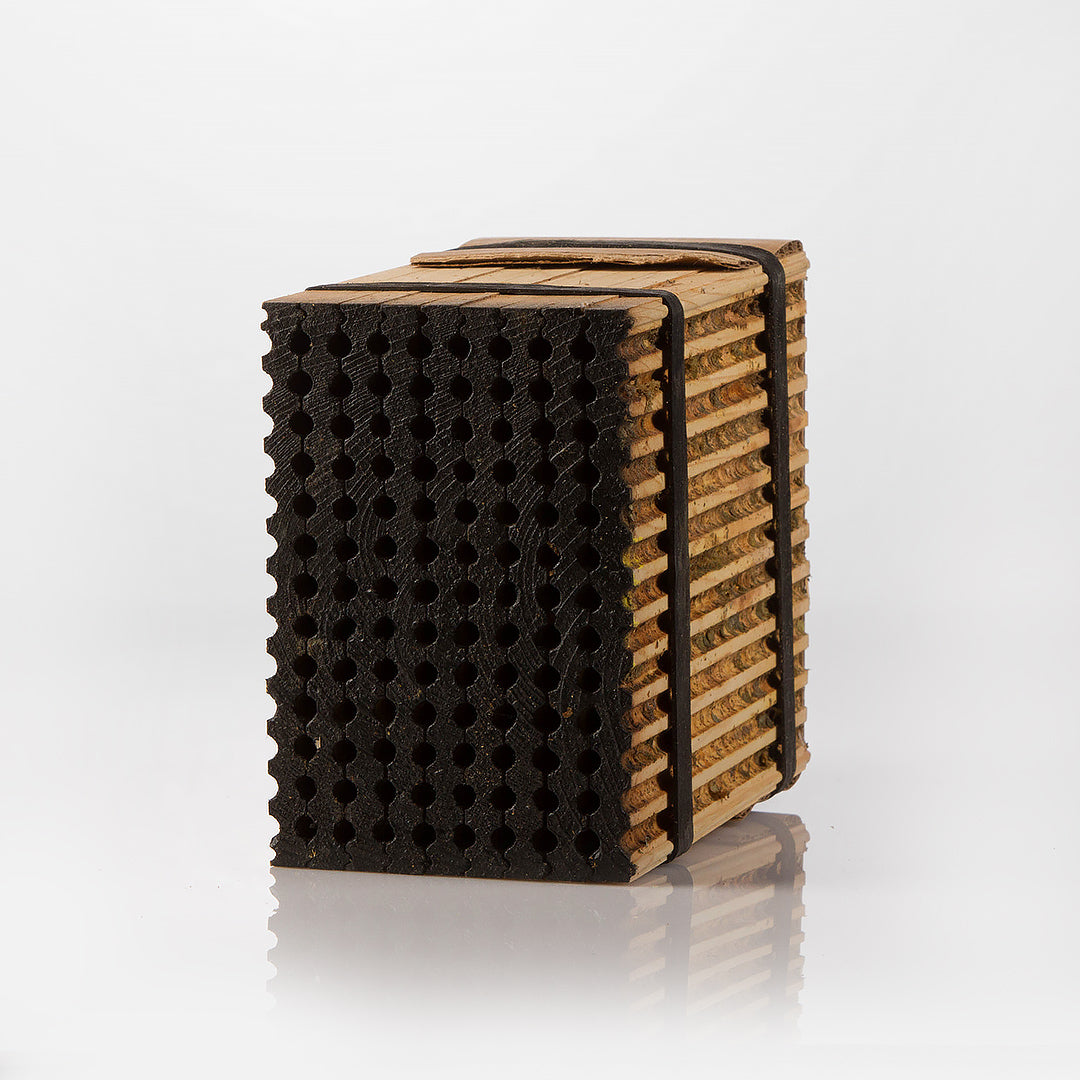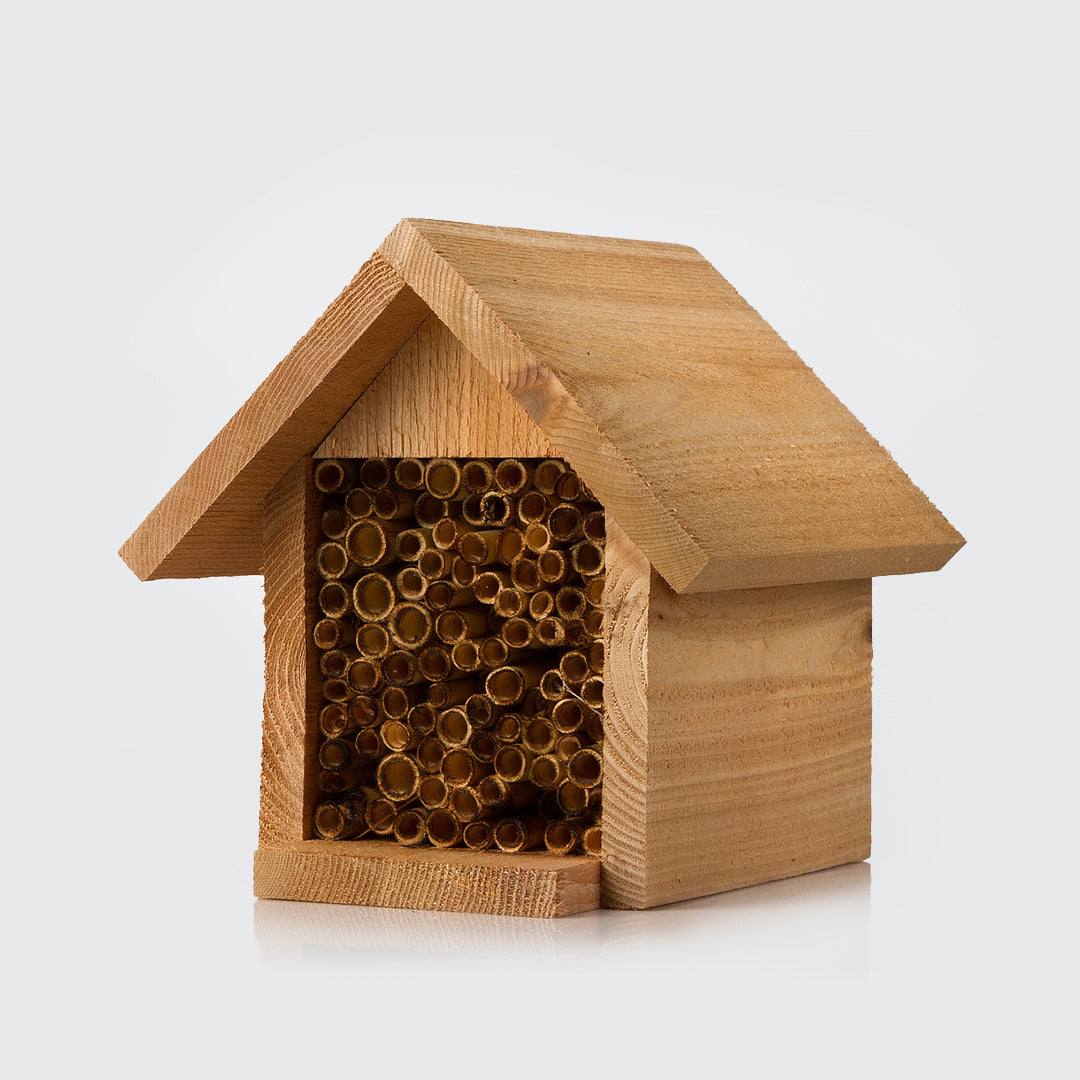Alfalfa Leafcutter Bee Facts

General Facts:
Megachile Rotunda or Alfalfa Leafcutter Bee belong to the family Megachilidae and are members of the Megachile genus. Leaf cutters are non-agressive, non- colonizing solitary bees that Pollinate alfalfa, gardens, and flowers. They are fuzzy with thin yellow/gray stripes down the abdomen and the underside is gray. They are small; about 1/2 the size of a house fly.

What do Alfalfa Leafcutter Bees Pollinate?
They are generalists; meaning they don’t stick to certain blossoms, they pollinate whatever they find and like. They pollinate most blossoming garden vegetables and various flowers including: alfalfa, blueberries, borage, canola, carrot, cranberries, crown vetch, hairy vetch, legume blossoms, melons, mint, onion, peas, sweet vetch, and many more.

How Many Bees Do I Need?
A single female Leafcutter Bee visits 100,000+ blossoms per day whereas a honey bee visits 50-1000. This means they pollinate 100% more effectively and efficiently than honey bees. As rule of thumb for a backyard garden is 1 bee per square foot. If you need help knowing what bees you need check out our step-by-step guide.

Emergence:
Leafcutter Bees are summertime pollinators. They incubate for 23-28 days at 70*F and emerge(usually June- July), find a nest, mate, and begin pollinating. Once a nest is chosen they don’t travel more than 400 yards to pollinate, usually staying within 100 yards. Their average nesting season is 8-12 weeks, after which they die. If bees emerge soon enough in June sometimes a second generation emerges in August for extended crop pollination.

Habitat:
There are 3 essential items for prime Leafcutter bee habitat:1. nesting place, 2. pollen source, 3. leaf source.
- The best nesting place for Leafcutter bees are in reed tubes; they feel most natural to the bees and provide a far greater return than other products including wood blocks, straws, misc.tubes, and grooved boards. To read more about nesting materials click here.
- They require a pollen source: alfalfa, canola, cranberries, onions, peas, blueberries, and various other vegetables and melons.
- They prefer soft flexible plants to harvest leaves for nest construction: alfalfa, flower petals, clover, buckwheat, roses, and other plant species.

Why Are The Called Leafcutter Bees?
Leafcutter Bees nest in tunnel cavities/tubes where they lay their larva. They lay 8-15 larva per tube; each larva is separated into cells where the mother places collected pollen and nectar to feed her young. Each cell is separated by layers of leaves. The bee collects layers by chewing semicircles in leaves and flower petals, hence the name “Leafcutter”. Holes are a good sign on your leaves! Once the tube is full the bee cements leaves together to plug off the entrance as a barrier against rain, predators, and parasites. She then moves on to the next tube.

Storing the Bees:
Once you receive your bees keep the in a cold place such as the fridge, garage, or cold storage; below 40*F (ideally 35*) so they stay in hibernation from fall to spring. Warning: if cocoons’ temperature exceeds 44*F for an extended period of time they will not hibernate properly; this may result in premature emergence and/or death.
Keep the bees in cold hibernation until outside temperature consistently exceeds 70*F; it is then time to place the bees in your bee house for releasing. You may also place summertime bees in the house in spring with he spring time bees and let mother nature take it from there. If the habitat is right roughly 80% will nest from where they emerge and the return of bees should be between 80-120% for next years pollination.

Setting Up the Bee House
Place house facing south- east. Leaf cutter bees are cold blooded and need the morning sun to warm them to begin flying. The bee house should be in secure place such as a tree, fence post, side of a house, barn, etc… Make sure the bee house is at least 3 feet off the ground to deter ants. If you have a lot of squirrels in the area you may want to squirrel proof the houses with chicken wire. Read more here.

Take Down and Winter Prep:
Magachile species require winter temperatures for successful emergence the following spring. In September- October (after the first frost) take the bee house down (or cover) and place until next spring. This will help keep parasites/predators away. if house is taken down early it can dislodge the larva from their food, be sure to store with the entrances up so larva remains in contact with their food at all times. This is the best time to replace used reeds and purchase new bees if needed.

104 Hole Laminate
104 Hole Laminate
Comes with 2 reusable bands
Cardboard backing so light doesn’t come threw the back
Reusable year after year.
Used for Leafcutter bees.
Fits in the Apiary and Deluxe Bee Houses
More Information on Nesting Material Click Here
We ship through USPS Priority Mail, Monday to Noon on Wednesday. Special request call or email us at 801-648-9035 Success@masonbeesforsale.com

Common Bee House
Common Bee House
Mix of Large and Small Reeds +/- 120
For all Bees
Mounting Bracket
Instructions on how to set up Click Here
We ship through USPS Priority Mail, Monday to Noon on Wednesday. Special request call or email us at 801-648-9035 Success@masonbeesforsale.com
Contact us
At Mason Bees, we are here to answer any questions you may have. Whether you are interested in any of our products for you own personal garden or for your orchard, we have a solution for you. Feel free to reach us directly and we will respond as soon as possible.
Phone number: 8016489035
Email: masonbeesforsale@gmail.com
Address: Mason Bees LLC,
10090 N HIGHWAY 38, DEWEYVILLE UT 84309, United States
Get Mason Bees
Boost your garden's productivity by providing a Mason Bee House for peaceful, non-stinging bees. As bee populations struggle, home gardeners can play an important role in attracting bees and other pollinators
News & Updates
Sign up to get the latest on sales, new releases and more …
© 2025 masonbeesforsale.com. Designed by Out of the Sandbox. Powered by Shopify


